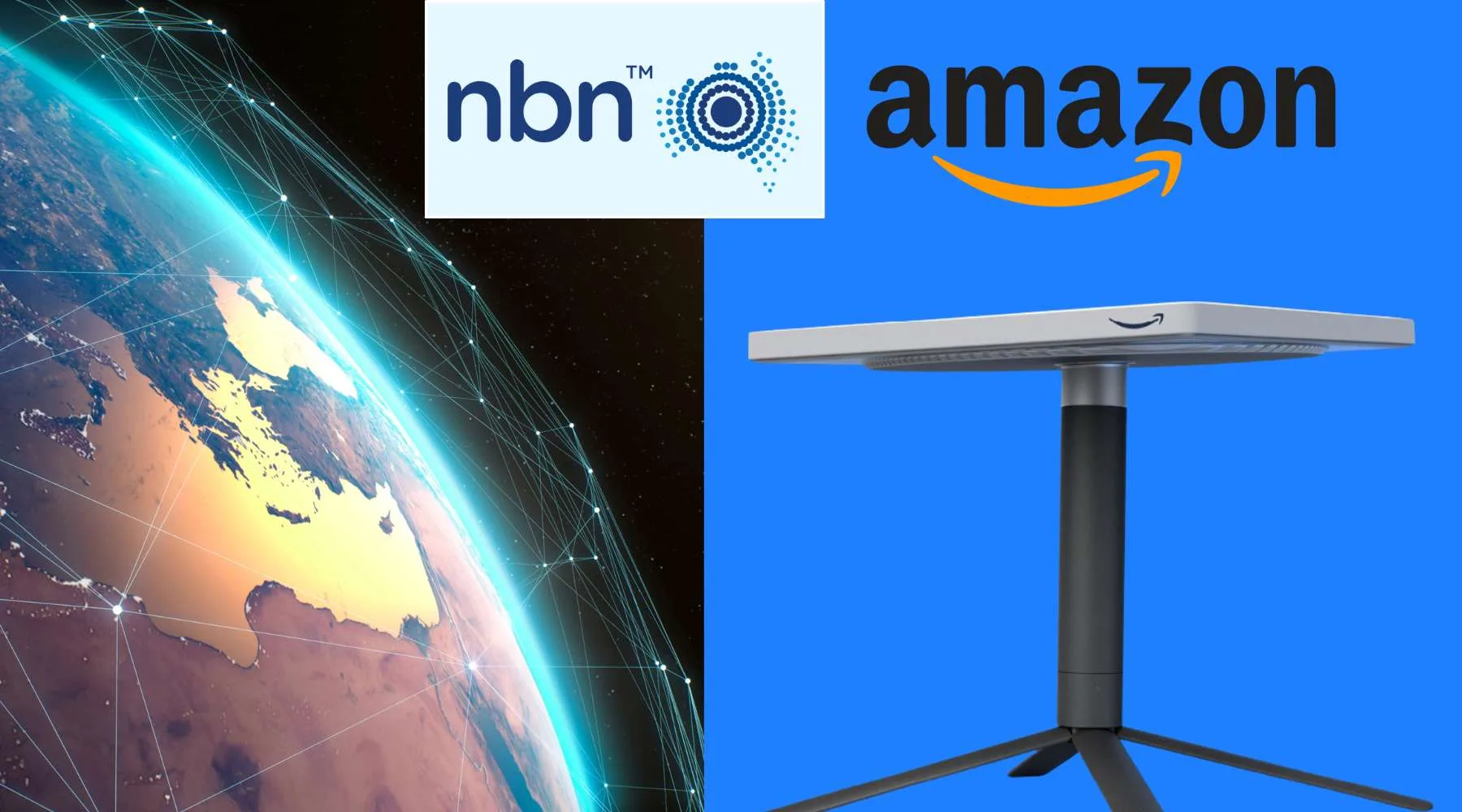Starlink snubbed: Why NBN picked Amazon for satellite internet upgrade

The speculation is over. NBN has officially signed an agreement with Amazon's Project Kuiper to offer satellite internet to regional and remote Australians.
Since NBN's ageing Sky Muster satellites are set to retire by 2032, the new partnership with tech giant Amazon aims to secure 'faster and more reliable' broadband for the 300,000 homes and businesses in regional, rural and remote parts of the country.
That figure encompasses all the premises that currently fall under NBN's existing satellite service footprint.
Before we get into what Project Kuiper is and how it works, here's what you need to know if you're curious why NBN sidelined Starlink and what happens if you're currently using NBN's Sky Muster service.
Why did NBN choose Project Kuiper over Starlink?
According to NBN, it went through a rigorous process, overlooking proposals and taking regulatory considerations into account before deciding Amazon was the best partner for offering a new satellite internet service.
This firmly puts Elon Musk's Starlink in the backseat, which is interesting given it's been giving NBN's Sky Muster a run for its money ever since launching in Australia.
However, how it stacks up against Project Kuiper is a matter of wait and see.
Starlink's biggest barrier for customers is its high hardware costs – something that could give NBN the upper hand if it includes equipment and installation in its satellite internet offering. Or at least, keep costs to a minimum.
What does NBN's announcement mean for those in the bush?
NBN's only signed a partnership agreement with Amazon.
It will now begin a consultation process with relevant stakeholders, including internet providers and members of the community, to shape the product offer.
This includes the types of plans it'll make available, how they'll be priced, the availability of equipment and the installation process.
There's still time as Amazon's Project Kuiper is not expected to launch in Australia until at least mid-2026.
NBN will keep Sky Muster customers informed every step of the way during the transition.
"LEO [Low Earth Orbit] satellite broadband, supplied by NBN Co and powered by Amazon's Project Kuiper, will be a major leap forward for customers in parts of regional, rural and remote Australia," Ellie Sweeney, Chief Executive Officer at NBN Co, said during a media briefing.
"Australians deserve to have access to fast, effective broadband regardless of whether they live in a major city, on the outskirts of a country town or miles from their nearest neighbour. That's what NBN was set up to deliver.
"By upgrading to next-generation LEO satellite broadband powered by Project Kuiper, we are working to bring the best available technology to Aussies in the bush."
What is Project Kuiper and how does it work?
Project Kuiper is Amazon's answer to Elon Musk's Starlink.
It uses over 3,200 Low Earth Orbit (LEO) satellites positioned just a few hundred kilometres above Earth, which is much closer than traditional geostationary satellites that orbit at 36,000 km.
This helps reduce latency. In layman's terms, that provides customers with a faster broadband experience.
Given Australia's vast geography, Project Kuiper's service is set to overcome connectivity challenges of traditional broadband infrastructure and really try to bridge the digital divide across metro and regional parts of the country.
So far, Project Kuiper has successfully launched 78 satellites across three launches. There are plans to launch 80+ additional rockets to "complete the constellation".
Sources
Ask a question
